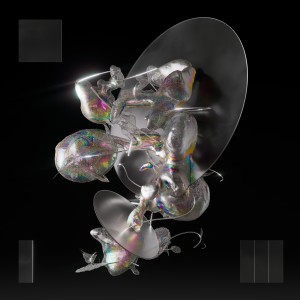
Artist
IMAGES: To download, click above. Photo one by Keith Gray. Photo two by Jonathan Aprea.
LINKS:
David Bird
Oxtail Recordings
Instagram
David Bird
Oxtail Records
In Wire Hums, composer/producer David Bird deconstructs the cello to reimagine this iconic instrument and reflect on the role of generative and algorithmic tools in musical expression. This album-length composition for digitally realized cello is out Nov. 10 on Oxtail Recordings.
As a teenager, Bird once tried his hand at learning the cello. During a practice session, he placed the instrument on an unstable surface, causing it to slip from its position and collide with the floor. The sound of the neck snapping and the bridge collapsing echoed through the room and etched itself into his memory. This experience offered Bird a new way of thinking about the instrument, not as a composite but as an assemblage of elements and materials. It’s hard not to wonder if this experience foreshadowed the sounds and concepts explored in Wire Hums.
With track titles drawn from multiverse concepts in physics and science fiction, Wire Hums guides listeners through an inventive and intricately textured digital soundscape. Yet, at its core, one can picture its creator, fascinated yet again by the timbre, power, and fragility of a newfound instrument. There are naive explorations of the instrument in “Wavetable,” frustrated practice attempts, as in “Iteration (Twin World),” a woody dissection of the instrument in “Quilted,” and a strange digitally-mediated resolution in “Superposition”—a track that sounds like a mash-up of Johann Sebastian Bach and King Crimson. Throughout these works, Bird’s efforts to push into new sonic domains are carefully tethered by a sense of familiarity and an etude-like restraint.
Bird credits his algorithmic tools as collaborators on this project, and the album offers a captivating amalgamation of drone, glitch, pulse, and microtonal harmonies reminiscent of Bird’s previous works, such as Mirrors and Iron Orchid. Unlike his previous albums, which are largely based on the manipulation of recorded sounds, all sounds in Wire Hums are digitally synthesized. This gave Bird more control over the manipulation of the material. Generative and algorithmic procedures aid in this domain and introduce variation and permutation to the parameters of the digital instrument, resulting in ever-unexpected and uncanny sonic textures.
Bird’s expertise in blending experimental chamber music composition with innovative electronic music techniques is not new. He is a founding member of the New York-based chamber ensemble TAK and also collaborates with Qubit New Music, a non-profit group that curates and produces experimental music events in New York City. His blend of chamber music composition with electronic music technique is evident in Wire Hums, where he embarks on a mission to deconstruct the cello’s familiar and tangible nature, resulting in a fresh repurposing and reimagining of this iconic instrument.



